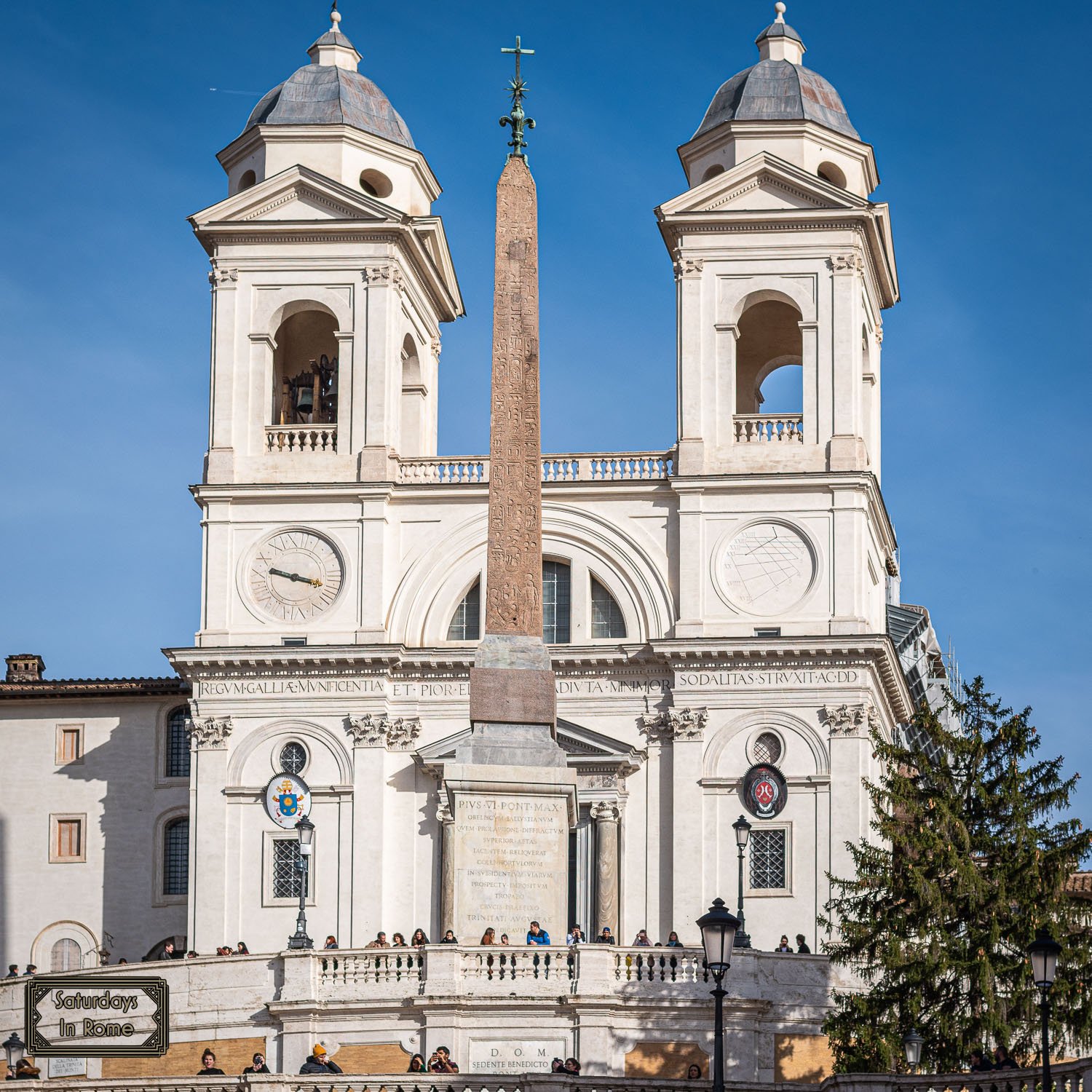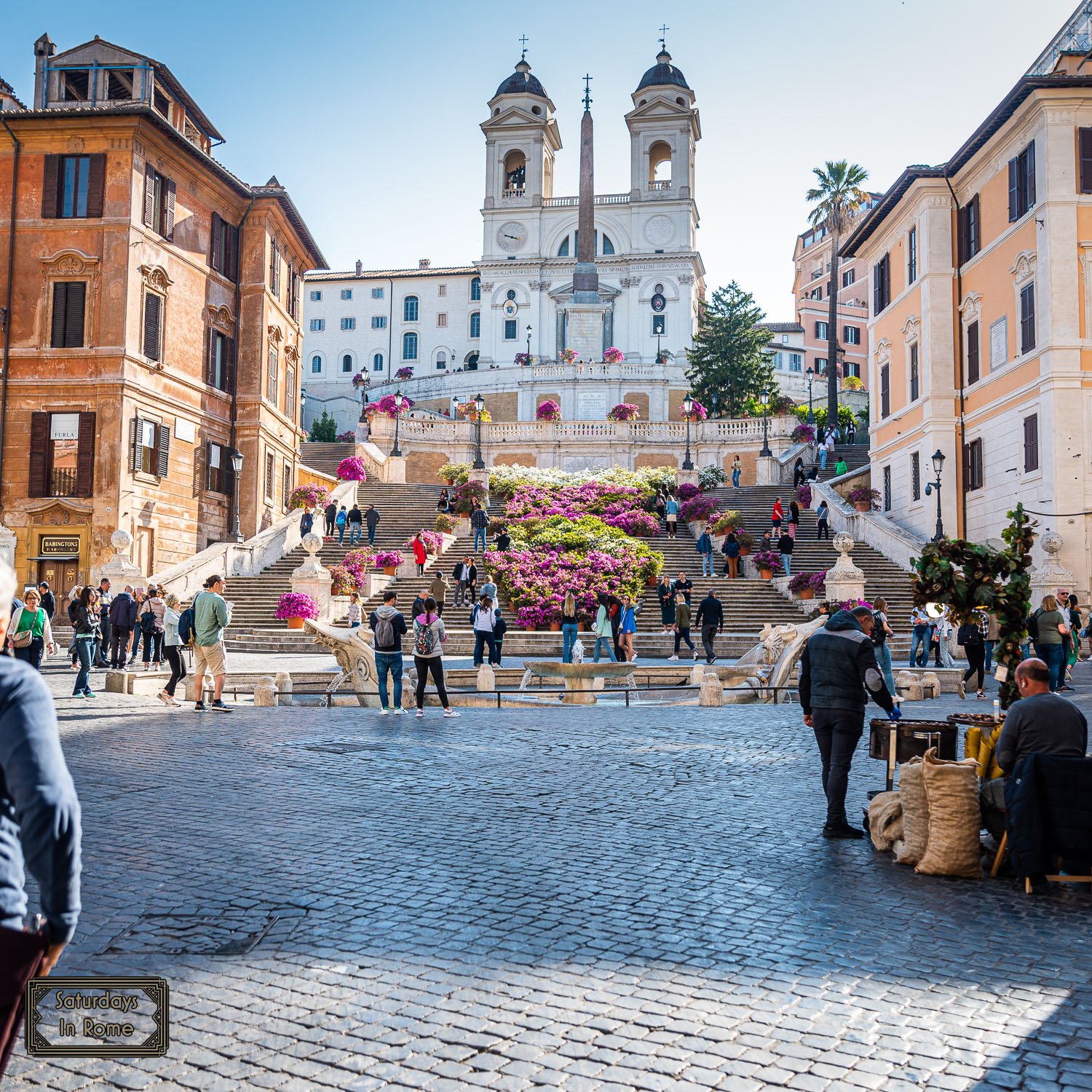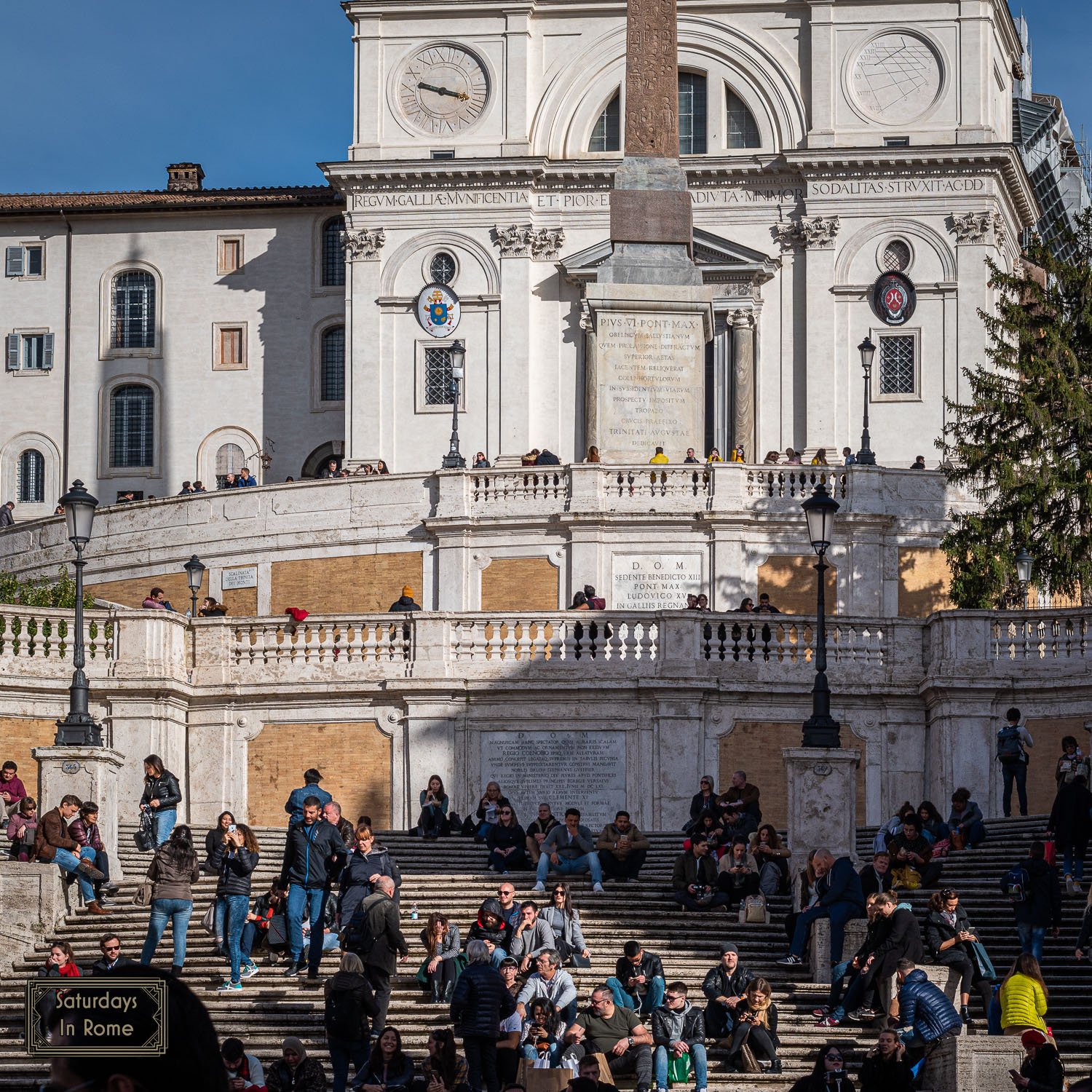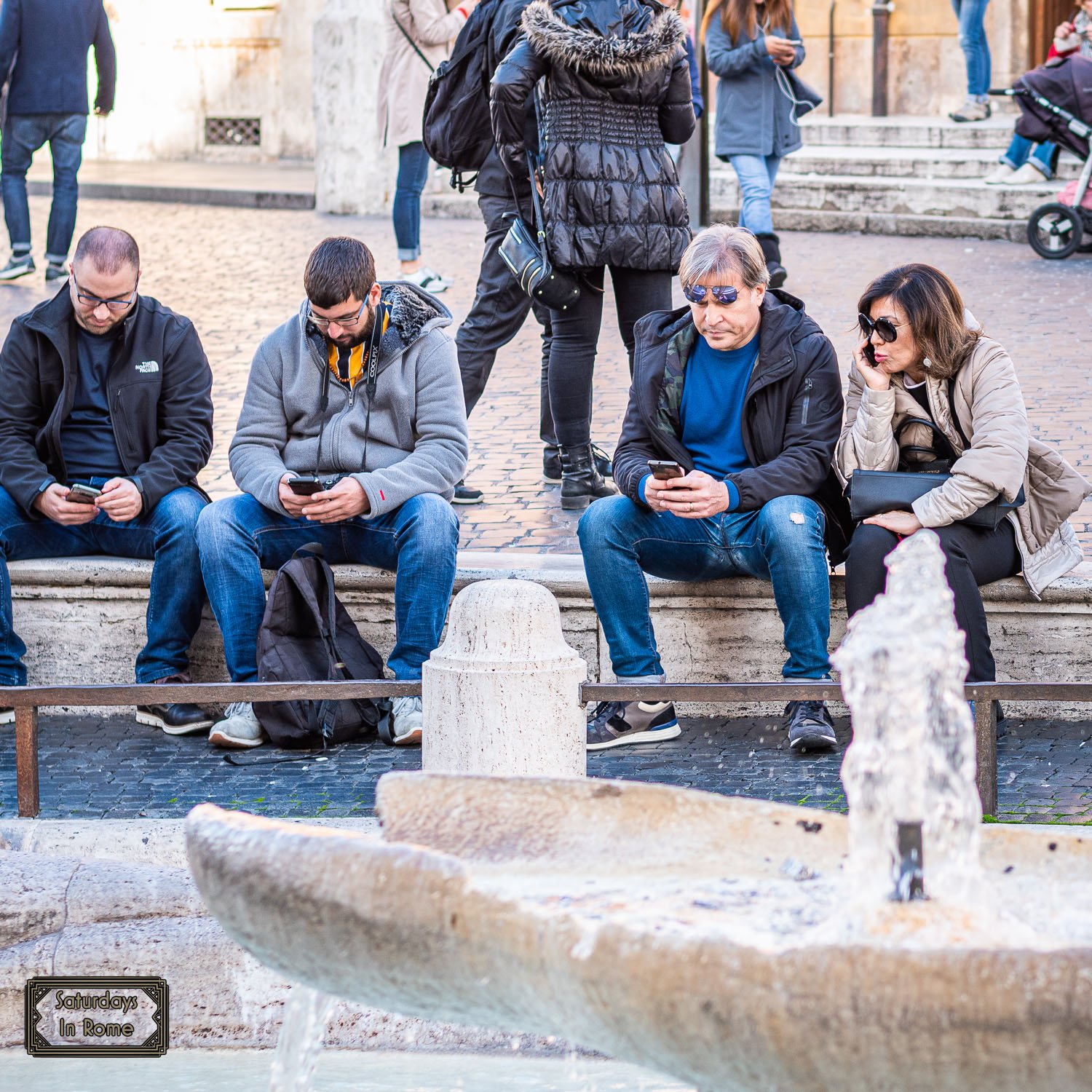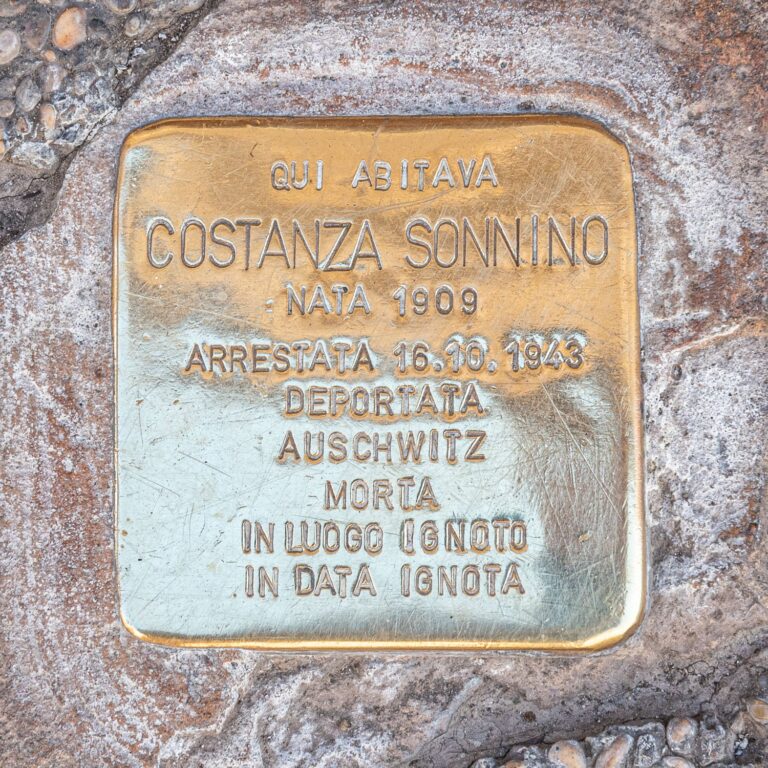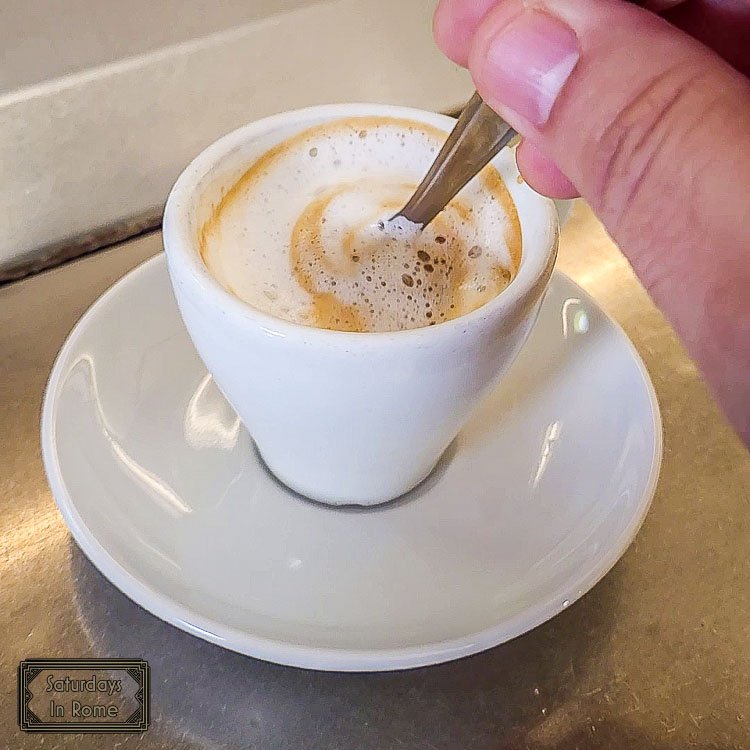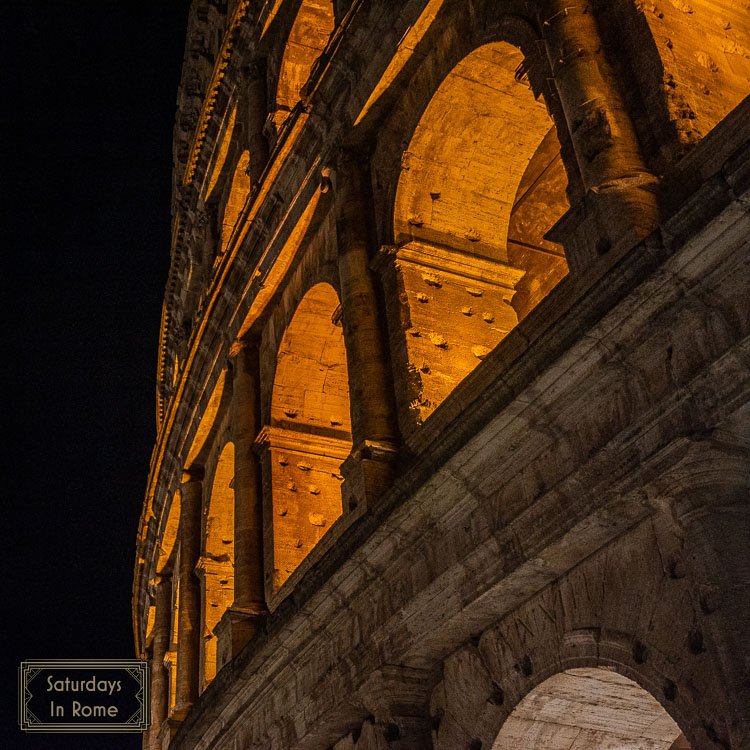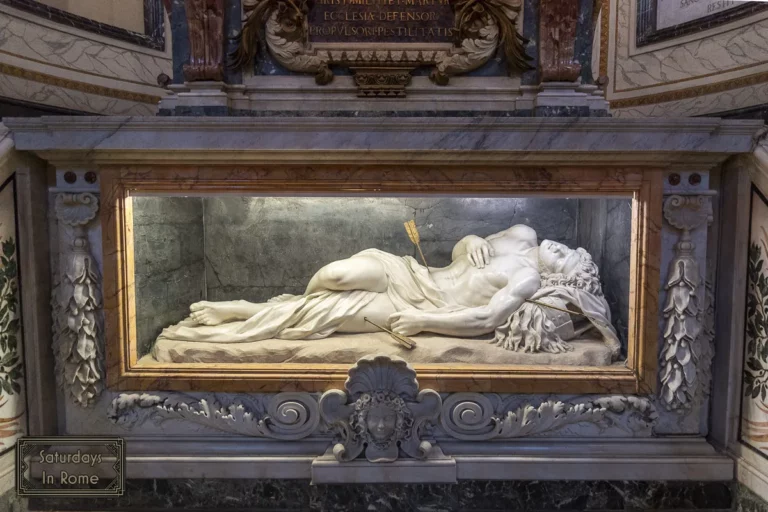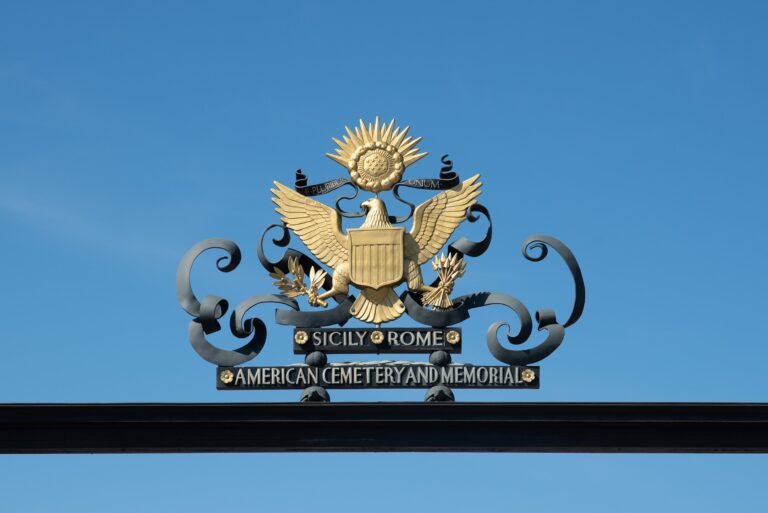Piazza di Spagna, Rome and the Spanish Steps Are Beautiful!
Piazza di Spagna, Rome and the Spanish Steps are a beautiful spot to enjoy any time of the year, but especially in the spring you really shouldn’t miss them.
The Holy Trinity Church of the Mounts
The Spanish Steps, or as it is known by its official name: The Steps of the Trinity of the Mounts (Scalinata della Trinità dei Monti), were built in 1725 and are composed of 12 ramps and 135 travertine steps which can bring any intrepid climber from Piazza di Spagna up to the church of the Santissima Trinità dei Monti, or more commonly known as the Trinità dei Monti.
Need Help Planning?
- Cheap Flights: Find The Most Affordable Flights.
- Accommodations: From 1 to 5 Stars And More.
- Car Rentals: Affordable Travel Across Italy.
- Sightseeing Tours: Explore Some Amazing Tours.
- Buying An eSIM: Stay Connected In Italy.
This post includes affiliate links.
Piazza di Spagna, Rome And The Church Of The Santissima Trinità dei Monti
The Church that anchors the top of the Spanish Steps is a Roman Catholic church built in the late Renaissance (1494) and along the the surrounding area is French state property. Given that it is French, I would be remiss if I didn’t mention its French name: La Trinité-des-Monts.
A hermit from Calabria bought a vineyard and obtained the authorization from Pope Alexander VI to build a monastery for the Minimite Friars, a religious order that was founded in Italy in the 1430s. The order was known for extreme humility and austerity. Construction began on the church of the Trinità dei Monti in 1502, next to this monastery, to celebrate a successful invasion of Naples. Construction was slow, and the present Italian Renaissance church was eventually built in its place and finally consecrated in 1585. Plans by Pope Sixtus V included having via Sistina connect the Piazza della Trinità dei Monti to Piazza Barberini across the city.
The Fame Of The Spanish Steps
Spring Flowers on the Spanish Steps
You might be wondering: Why are the Spanish Steps famous? Well, they are certainly beautiful, grandiose and positioned right in the middle of a popular path for tourists, but for me the fame came from the movies. The film Roman Holiday was shot in Rome at the Cinecittà Studios, with location shots all around town. The striking view of Audrey Hepburn meeting at the Spanish Steps is a classic of Italian and American cinema, and shouldn’t be missed. It remains today one of my favorite Italian movies, even though it is in English.
In addition to my favorite movie, the Spanish Steps are so inspiring that they appeared in books by Tom Clancy and F. Scott Fitzgerald, among others, as well as a long list of movies and TV shows that includes: The Talented Mr. Ripley, Everybody Loves Raymond, To Rome with Love and The Man From U.N.C.L.E.
Do They Call It The Spanish Steps Because of Piazza di Spagna?
As mentioned, the official name of the stairs is not The Spanish Steps, but rather Scalinata della Trinità dei Monti. The name is derived from the Piazza di Spagna at its base, which used to be the home to the Spanish Embassy in the 17th century.
Fontana della Barcaccia
In the middle of Piazza di Spagna and at the foot of the Spanish Steps there is a fountain that acts as a gathering spot and a place to rest for the weary tourist. The fountain’s name is Fontana della Barcaccia, which translates to the Fountain of the Ugly Boat. It was built by Pietro Bernini, Gian Lorenzo’s father in 1629. If you are checking the dates of construction, you will notice that the fountain was built before the stairs.
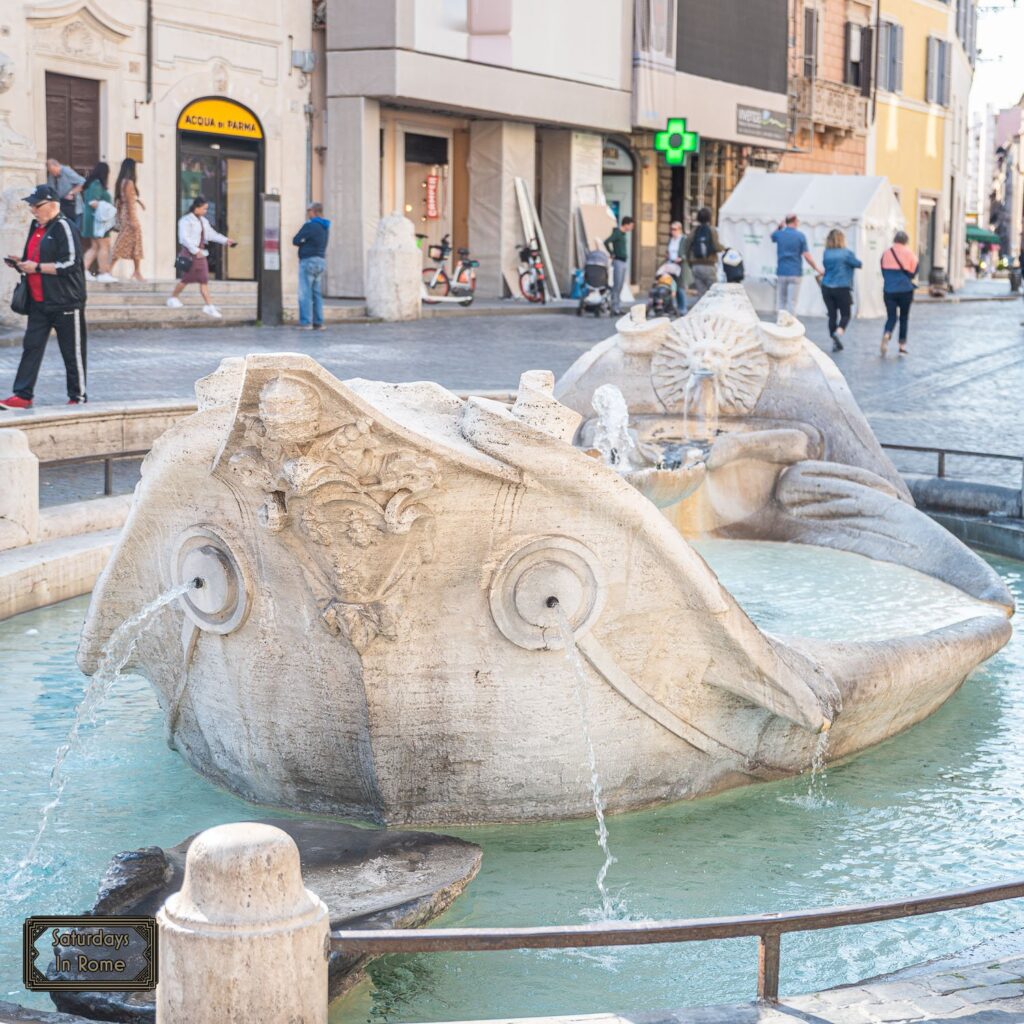
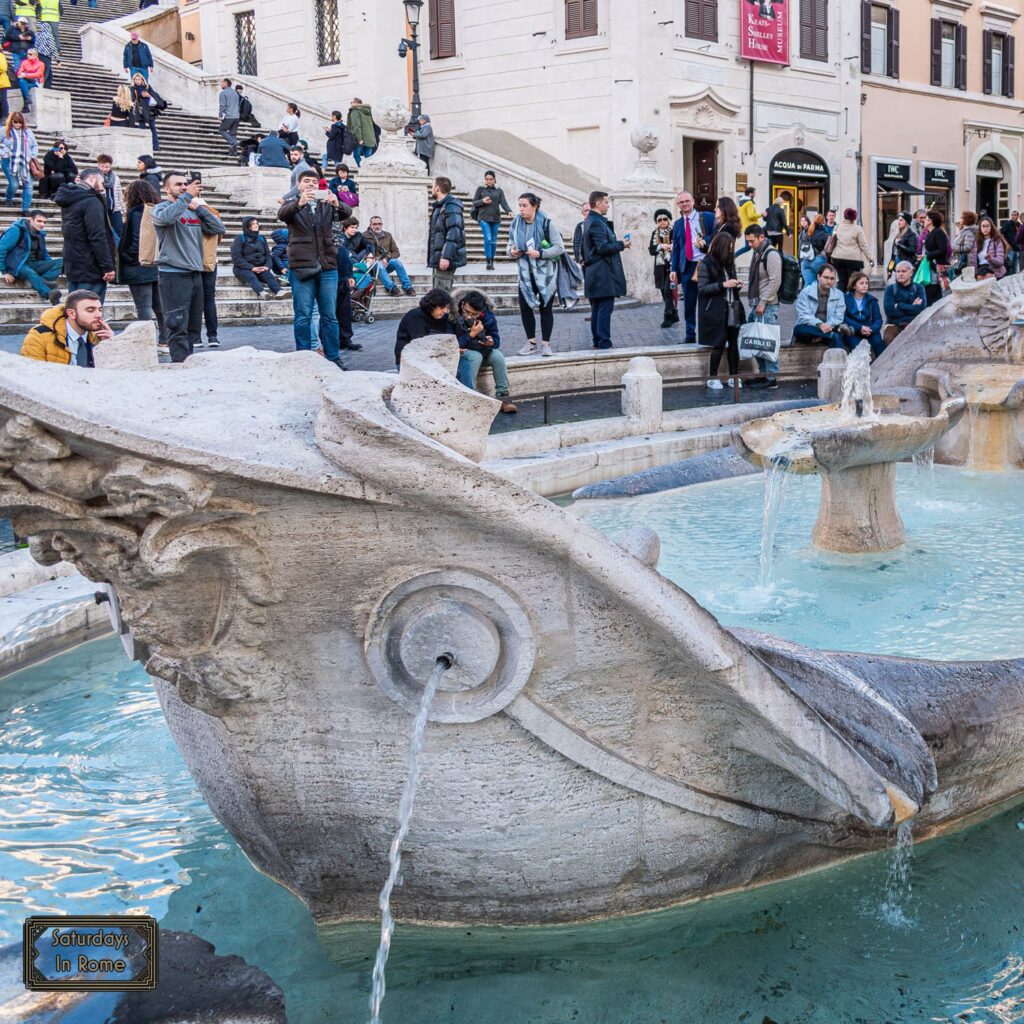
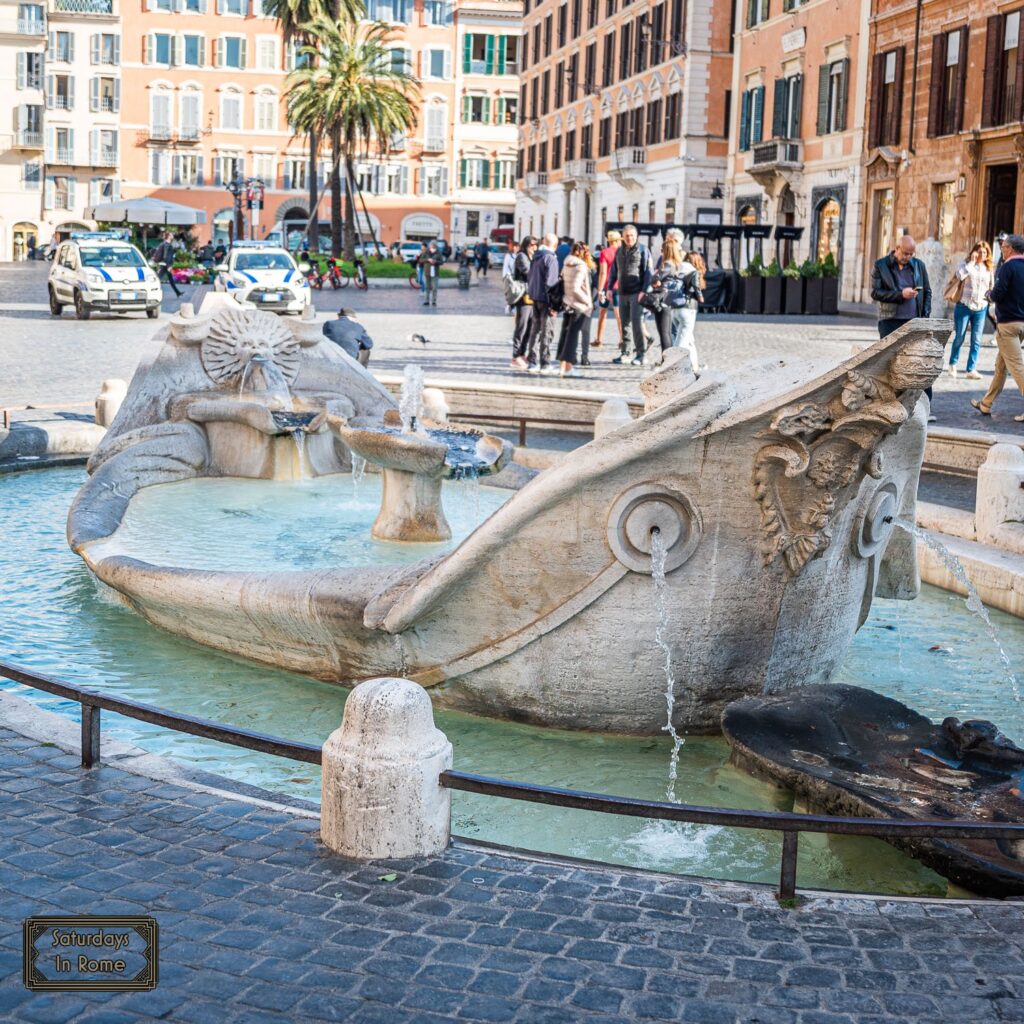
There were construction issues to overcome with the fountain due to the persistent low pressure of the Acqua Vergine aqueduct in that location. Pietro Bernini overcame the challenges by designing the fountain in the shape of a semi-submerged boat in an oval basin placed slightly below the road level, with the bow and stern, of identical shape, very raised compared to the lower lateral edges, just above the level. of the pelvis. At the center of the boat a short vertical shaft supports a small oblong basin, lower than the stern and bow ends, from which a gush of water flows which, once the basin is filled, falls inside the boat and then overflows from the low side edges and flared, in the basin below.
In addition to the two sun shapes, the decorations are completed by two papal coats of arms, with the tiara and bees, the heraldic symbol of the Pope’s family, the Barberini.
Why Can’t You Sit On The Spanish Steps Or Around Piazza di Spagna?
Over the years, and continuing up to today, the image and portrayal of The Spanish Steps for fashion brands is so important that it led companies like Bulgari to pay for the restoration of the steps, at a cost of €1.5 million, to re-establish its grandeur in 2016.
Sitting On The Spanish Steps – In The Past
After the restoration, sitting on the steps was banned as a way to prevent damage to one of the city’s most iconic landmarks. You should be aware of these restrictions because if you are caught sitting on the steps, you would receive a very expensive fine (€400) and be banished from the area.
Bad Behavior Around The Spanish Steps
I have previously written about the bad behavior of tourists, and the Spanish Steps seem to frequently be a victim of them. The bad behavior of tourists is a growing problem that seems to be ramping up more now in the post-pandemic fervor to visit the beautiful cities in Italy.
Rome had passed a law, which replaced a law from 1946, covering infractions like late-night public drinking, bathing in fountains and defiling historical sites. It also grants local police greater authority to expel perpetrators from certain areas of the city. Repeat offenders could lose their visitation rights for an extended period of time.
Example 1 – Spanish Steps Scooter
A 28-year-old American tourist has caused €25k worth of damage to Rome’s Spanish Steps after she tossed her scooter down the marble staircase, which occurred at around 03.45am and it was filmed by a passerby. The video was published by Italian news sites and quickly went viral. Rome police caught up with the woman filmed throwing her scooter, along with a 29-year-old American man who wheeled his e-scooter down the 18th-century staircase. The pair were fined €400 each and received a temporary ban from returning to the landmark.
Example 2 – Maserati Spanish Steps
A 37-year-old Saudi businessman was the driver of the Maserati who drove down the Spanish Steps, damaging the Baroque staircase. The driver was in Rome on vacation at the time of the incident, which made national news in Italy. The man had been on his way home with a woman he met in a nightclub when he made the wrong turn. The man now faces charges of aggravated damage to a cultural heritage site, in addition to a fine.
Resting In Piazza di Spagna, Rome
The Ugly Boat Meeting and Resting Place
From an aesthetic and cultural point of view, Piazza di Spagna and the Spanish Steps never cease to excite both tourists and Romans. Be sure to climb the steps enjoying the views, but don’t stop to eat lunch or it might be the most expensive lunch you have had in a while. When you climb back down, relax at the ugly boat and plan your next steps!
If you enjoyed this description of the amazing Piazza di Spagna, Rome, you might also find these posts helpful and interesting as well:
- The Spanish Steps Flowers Are A Sure Sign Of Spring In Rome.
- Inside The Pantheon Is A History Of Artists And Kings.
- Your Guide To Rome’s Jewish Quarter.
- Bad Tourist Behavior In Italy Needs To Be Avoided By All.
- Is The Colosseum In Rome, Italy Worth Visiting?
- Great Things To See In Piazza Navona.
- The Districts Of Rome Are All Uniquely Roman Experiences.
- Piazza del Popolo Rome – The Beauty And The History.
- Vespa Rentals in Rome.
- Villa Doria Pamphili Park Is Worth A Visit For Many Reasons.

